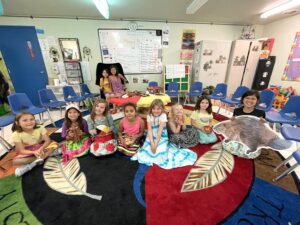The legacy of the Water Walker inspires the Wasauksing Kinomaugewgamik 13th annual Water Walk

By Kelly Anne Smith
WASAUKSING FIRST NATION— Great participation is expected in the Wasauksing Kinomaugewgamik 13th annual Water Walk taking place May 30.
Community members from all communities are invited to join in at any leg of the 11.52 km Wasauksing Kinomaugewgamik Water Walk starting at 9:30 am.
Water Walk Coordinator Nikeeta Tabobondung says a lot of planning has gone into the Water Walk to make it extra special to celebrate the 10th anniversary that the COVID-19 pandemic stalled. Tabobondung speaks of the walk being borne from Josephine Mandamin-baa.
“We reference her as one of our teachers and our Grandmothers here at Wasauksing Kinomaugewgamik. It was based on her walk that started in 2003— approximately 22 years ago— when she first started walking the Great Lakes.”
Tabobondung explains that all the women of the school community in Wasauksing First Nation travelled to walk with her.
“At that time, they took all the young school children that identified as female and then the teachers who are female and some Elders from the community. They joined her. They drove out to Mattawa, Ontario, where they met her.”
The experience especially inspired a little Water Walker who was part of the drum group at Wasauksing Kinomaugewgamik called the Little Spirit Singers.
“It was one of the original Little Spirit Singers feeling the urgency to start an initiative here in our community as well after she had walked with our Grandmother Josephine-baa, during that leg when they visited her in Mattawa.”

Ozawaanimkeeqwe or Deina Bomberry is the Anishinaabemowin teacher and traditional cultural lead at the school. Tabobondung calls Bomberry the driving force in the community partnering with the Little Spirit Singers to bring the Water Walk to life in Wasauksing.
“Deina or Ozawaanimkeeqwe and one Little Spirit Singer stayed behind and they had a Pipe Ceremony with Josephine[-baa]. This Little Spirit Singer was really moved and emotional and asked, ‘What can I do? What can I do in our community to pray and protect the water?’ And she said, ‘You need to start your own Water Walk in your community in Wasauksing.”
Tabobondung gets emotional telling the legacy behind the story.
“They have been adamant and holding that the last 13 years since they sat in that Pipe Ceremony with her. Isn’t that amazing?” Tabobondung explains. “In the spirit of coming back together in our communities, strengthening after the pandemic and being able to share space and share ceremony together, we felt it was really important to hold and host this big one… The students of Wasauksing Kinomaugewgamik are Water Walkers and members of the Little Spirit Singers… Usually we have quite a few community people from the town of Parry Sound, from Wasauksing, Shawanaga, Magnetawan, Henvey [Inlet] – all those communities- that will come and join us. The invitation is open, far and wide, across our Turtle Island and beyond.”
The Wasauksing Kinomaugewgamik Water Walk coordinator encourages people to start a Water Walk in their communities.
“There are a lot of folks doing that work. We all have the responsibility to do more.”
Women traditionally carry and protect the water. Tabobondung says all males are welcome.
“We absolutely need the men present. And we need to do this work together. There are responsibilities for both of those roles. The Eagle Staff walks with the water at all times. It’s the young men or an older man or a grandfather who will hold that Eagle Staff for us. And it’s the Eagle Staff that walks on the outside and the water on the inside. Because the men and the Eagle Staff are protecting the women and the water who walk on the inside of the road, like the closest to the bush or the ditch or the water. And the young men and the men keep on the outside of the procession. Just to offer that duality and that balance and to teach that we both have these responsibilities and shared roles. In the event that we didn’t have a grandfather or young man present, the women know how to do that to. And in the event, we had no women in the community picking up the water, I trust that the young men would feel called to do the same.”
Tabobondung explains the intentions and destination of the walk on the island of Wasauksing First Nation in Georgian Bay.
“When we walk, we’ll be walking with a copper pail full of water from Wasauksing and we are carrying that to the mouth of the Seguin River, which is where we’ll be ending the walk,” Tabobondung shares. “I invited them to bring a little bit of water from their territories or their communities so that when we do the offering, we’ll sing a song, we’ll do a Water Ceremony and then we will all offer that water back to the river at that time. So, we pour the water that we carried and we prayed for the whole journey and we’ll return it back to the water and people are invited to do so. And at that time, anybody who is feeling inclined to pray can come in and offer their semaa— their tobacco— to the water as we are offering and pouring the water in.”

